Glasstire staff and contributors share which Texas-based shows, events, and works made their personal “best lists” for 2017.
****
Rainey Knudson:
The Arts’ Response to Hurricane Harvey
One of the most enjoyable things about being a Texan is getting to say (in an exaggerated accent), “Shit honey, we got the biggest goddamn _______ [fill in the blank: trucks, barbeque pits, fracking sites, cholesterol levels] in the whole goddamn world!!!” With Hurricane Harvey, which made US landfall on August 25th in Rockport, TX as a Category 4 storm, we got to add “storms” to the list. Rockport was torn to shreds, and Houston and Beaumont were dumped with more rainfall than ever recorded in the US. At one point, the entire city of Port Arthur was submerged.
What emerged from the catastrophe was the inspiring scene of a region coming together to heal itself, with the usual boundaries of socioeconomic class and ethnicity suspended as people from all walks of life jumped to help other people from all walks of life. It was, in a word, beautiful.
Along with everyone else, the art community of the region banded together to support its own: the Art Museum of South Texas in Corpus Christi and the Beeville Art Museum have stepped in to host the Rockport Art Center’s exhibitions; multiple fundraisers were held to support artists who had been affected; the Harvey Arts Recovery group quickly formed in Houston to connect artists and arts organizations with aid; the Texas Commission on the Arts mobilized and distributed national funding; and venues all over Houston became hosts to exhibitions and performances whose venues had been flooded. Individually, artists organized teams of volunteers to rip sheetrock and wood floors out of flooded homes. Every stereotype about Texas (including the one about things being bigger here) melted away to reveal the core of our character: that we appreciate and even love each other, and that we sure as shit aren’t going to let a natural disaster break us. I often say that it takes tremendous grit to be an artist in Texas. Part of having grit is having a deep-seated, tenacious joy for living. That tenacity was on full display in the aftermath of Harvey.
Chuck Ramirez’s Big Moment
A great retrospective of an individual artist can sometimes make or break them: I gained a much deeper appreciation for Cindy Sherman after seeing her massive show at the Dallas Museum of Art in 2013, for instance; and I fell out of love with Richard Tuttle’s sculptures after seeing his solo show at the same institution in 2006 (I loved his drawings, though).
Prior to the celebration of the late artist Chuck Ramirez in San Antonio this fall, I doubt I would have described him as a great artist. But the trio of shows of his work, at the McNay Art Museum, Ruiz-Healy Art and the Tobin Center, together created a whole that was greater than the sum of the individual works. Ramirez was a photographer with the canny eye of someone with a commercial background — his early job shooting pictures of food for the H-E-B grocery chain would inform his most recognizable works, of objects (often abject ones) photographed in minute detail against a stark white background. But he also made videos and sculptures, some of which were on view at the McNay, and which filled out my impression of him as a sharp-eyed magpie and connoisseur of everyday kitsch. Here was an artist who soldiered on, as we all must, through illness, self-doubt, and loss, and still was able to find clever ways to invite us to take a closer look at our world. And this will be perhaps Ramirez’ greatest legacy: the community he created around himself during life continues to be touched by him after his death. As I said in our Fall Preview this year, these shows were “a testament to the impact that one person can have on the scene — one personality, an artist with the right spirit can transform a whole community. And he was that person.”
Rice University’s Transition
For those of us who’ve been paying attention to the arts at Rice University for a long time, 2017 was a seismic year. Rice has never been a school noted for having much institutional interest in the arts, outside of music: its theater and studio arts departments could best be described as anemic, and it certainly wouldn’t top the list of any ambitious students looking to get an art degree. Which makes it all the more surprising that, for 22 years, Rice was home to one of the best, if not the best, kunsthalles in Texas.
The Rice Gallery, under the leadership of director Kim Davenport, and later the curator Joshua Fischer, only exhibited site-specific installation art in its boxy, diorama gallery, one wall of which was glass. Over the years, Davenport demonstrated a knack for quietly unearthing talents who would go on to heights of art world success, and exhibiting them alongside the occasional more established stars. It was a treasured gem that probably never received the accolades and attention it deserved.
When it was announced that the university would be closing the Rice Gallery as part of its opening of its new Moody Center for the Arts, I shared in the general sense of dismay over this decision. I still mourn the Rice Gallery, and I think it and the Moody Center, with its emphasis on cross-departmental curriculum and residencies — being more “interactive,” if you will — could certainly co-habitate on a campus with a more robust dedication to visual art. But I have enjoyed the Moody Center’s exhibitions, particularly their lively show of Mickalene Thomas this fall. Rice now has more square footage dedicated to exhibiting art than they have ever had, and the Moody, under the leadership of director Alison Weaver, probably plays a more vital role in the overall life of the campus and the students than Rice Gallery did. The Moody is also a pleasant, welcoming space for visitors to the southwest edge of campus (Weaver won a battle to have a café on site, so now there are two places on campus where you can get a decent cup of coffee). In addition, public art on campus is now part of the purview of the Moody Center, meaning a scattershot, donor-driven program will hopefully have more focus and quality control.
The passage of the new year is all about new life and a fresh start. Change is never easy, but with the Moody Center, Rice has committed to a new kind of art institution on campus, one perhaps more in keeping with the times. Vive la change, vive la différence. I look forward to seeing what the Moody has in store for us.
****
Brandon Zech:
Mexican Modernism Takes Texas: México 1900–1950: Diego Rivera, Frida Kahlo, José Clemente Orozco, and the Avant-Garde at the Dallas Museum of Art, Paint the Revolution: Mexican Modernism, 1910–1950 at the Museum of Fine Arts, Houston, and Mexico Modern: Art, Commerce, and Cultural Exchange, 1920–1945 at the Harry Ransom Center at the University of Texas, Austin
2017 will be known as the year Mexican Modernism took Texas. Three venues across the state — the Dallas Museum of Art, the Museum of Fine Arts, Houston, and the Harry Ransom Center in Austin — hosted large-scale exhibitions featuring works from the core years of the Mexican Modernist movement (approximately 1900 to 1950). Though each exhibition was different, the underlying theme of all three shows was constant: art movements do not stop at borders, and there are plenty of artists who have been overlooked by the history books. I saw the shows as an attempt to revise the overwhelmingly Eurocentric view of modern art that is so ingrained in our art history. Diego Rivera and Frida Kahlo certainly weren’t the only Mexicans making modern art in the early and mid 1900s — and some of their contemporaries, like José Clemente Orozco and David Alfaro Siqueiros, created amazingly powerful paintings that look as wonderful today as they day they were made. I’m glad these three exhibitions were able to jog our collective memory.
Gabriel Martinez: Everything Turns Away Quite Leisurely at the Blaffer Art Museum, Houston
Though I’ve very recently spilled ink over Gabriel Martinez’s exhibition at the Blaffer Art Museum, I’d be remiss to not include it as one of the best shows I saw this year. So often, conceptually driven art can come off as precious or impenetrable — i.e. the work only makes sense if you know Descartes and have a deep understanding of contemporary abstraction. Martinez’s works, however, have easy entry points and layers of meaning that viewers can either dig into or leave unturned. Without researching or reading the exhibition’s text, it’s easy to understand the ideas Martinez mines — car culture, broadsheet posters, and our desire to label and categorize things come to mind. If you dig deeper, you’ll find Martinez’s fascination with city planning, social uprising, and the government’s desire to control our lives. The more attention you allot to the show, the more it unfurls itself. It’s an exhibition that just keeps on giving.
Nina Katchadourian: Curiouser at the Blanton Museum of Art, Austin
Throughout this harrowing year, I’ve seen plenty of art attempting to respond to our current situation, with much of it taking on a heavy handedness that left me feeling tired and perturbed. Sometimes, when times are dire, we need a lighness to lift us from the grind. For me, Nina Katchadourian’s exhibition at the Blanton Museum of Art in Austin was just that. The artist’s works, which are quite disparate in their appearances and processes, manage to combine charm, longing, humor, and melancholy into one tightly packed punch. Each work in the exhibition had a quiet, meditative air that asked viewers to think about more than what was just in front of them — it asked us to consider the human condition. From migration to etymology to artificial intelligence to our place in the universe, Katchadourian knows how to guide us so that we not only consider the bigger questions, but also have a hell of a good time on the journey.
*****
Neil Fauerso:
Street Sects at some warehouse in Houston
Earlier, this year, during the spring, I was in Houston seeing some art shows and visiting a friend. He mentioned that a mutual buddy of ours from Denton, a musician into all sorts of twisted sounds like noise and analog synth music, recommended (in terms so grave and intense as to be befitting of a directive to evacuate Saigon in 1975) to see a band at some warehouse space called Street Sects. I was fairly faded, but the severity of the endorsement persuaded me. We showed up and the band was setting up a highly intricate stage design (especially for a tiny space in a cement warehouse) of strobe lights and fog machines. The show started in almost complete opacity from the smoke and the strobes, and brutal industrial drum programming kicked in. The singer would lunge out from the smoke and appear right in your face, screaming.
Eventually he fired up a chainsaw (without the chainbelt) and swung it around at the petrified crowd. It was the most intense show I’ve ever seen and I only lasted about 15 minutes before I felt like I was about to faint. I’m not sure I even “like” Street Sects or their aesthetic (they were selling shirts that featured a sad Daniel Clowes-like dude hanging himself in a garage and the caption read: “There’s nothing to be ashamed of for letting go”). But I found it tremendously impressive and inspiring that some tiny DIY Texas band put in the work and trouble to stage something that was about 10 times more visceral and intense than a Nine Inch Nails arena show. In the same way that Eraserhead is one of the most unsettling movies of all time and it was made for nothing, with discarded filmstock, the message is ALWAYS GO HARD with whatever you have.
The Mirror at Austin Film Society
The thing I miss the most about living Austin is the Austin Film Society, a non-profit permanently housed in the Manchester Theater — a surreally tony space in a ghost strip complex off I-35 that now has an upscale bar and beautiful large-scale vintage posters of classics like Solaris and If… . AFS regularly screens film and restored digital classics. I saw a film print of the first Hal Ashby movie The Landlord, a restored digital print of Lina Wertmuller’s Seven Beauties (which I disastrously pitched to friends as a “bawdy Italian comedy”) and best of all, a film print of Tarkovsky’s magisterial, gorgeous The Mirror. An elliptical plunge into memory — a dying poet remembers his childhood, his mother, his poems — the film drifts from memories to dreams effortlessly. Tarkovsky remains perhaps the most preternaturally gifted filmic artist who has ever lived, with a grace and fluidity with mise en scene, camera movement and editing that replicates the logic and framework of dreams and memory better than anyone. The wind on the grass, the woman kicking her heels in a hallway, and the burning barn at sunset are etched in my mind as if they actually happened to me.
Jimmy Canales, Para Chrome at Presa House at Fl!ght Gallery, San Antonio
Canales’ wondrous, dazzling show that involved wearable chrome suits, parachute cord string sculptures, artificial trees, and other objects was the most impressive and witty Texas show I saw all year. Canales cleverly fused his own obsessions and history into a rollicking meditation on vanity and the longing to shine. His wearable suits are all charmingly impractical — the idea being that body improvement on some level is about a dream instead of material goals. Canales connects science fiction with lowrider culture of South Texas, the aesthetic souls behind the metal and chrome. Para Chrome delivered what I hope for whenever I see an art show — visual delight, wit, interesting and unexpected references, and an overriding, ineffable sense of meaning.
****
Betsy Huete:
Anthony Suber, Ritual Redux at Cindy Lisica Gallery, Houston
A mouth smeared upon, a face entrapped, eyes shut in resignation. With Medium (Shaman) (2014) as a focal point for this exhibition, Anthony Suber asked us with absolute vulnerability to sit with the seemingly bottomless frustration and pain that can accompany blackness: to be feared instead of understood, to be talked at instead of heard, to be seen as a caricature instead of a person.
On Repeat at Clarke & Associates, Houston
I thought this show was going to be annoying, because it mostly comprised of the type of repetitive abstraction that often reads as distant and ironic. Distant irony has its place and function under the aegis of contemporary art, but it can also feel tone-deaf and self-serving in the times we find ourselves. With younger contemporary artists especially, distant irony is also easy and arguably a dishonest caricature of the Millennial condition. Luckily, Raphael Rubinstein organized a show of works — many created with abject domestic materials — that while, yes, were distant and ironic, were also imbued with tactility, carriers of memory, and loving complexity.
Francesca Fuchs, North Exterior Wall, Lawndale Art Center, Houston
With all the murals popping up around Houston that function less as art and more as Instagram facilitators, Fuchs’ North Exterior Wall is a breath of fresh air. There are various entry points of non-commitment in this work — it’s not quite Art Deco but not exactly cathedral pillars either; not really trompe l’oeil, but convincing enough in a glance while driving down Main Street; it gives the illusion of depth at some angles, but is also so visually shallow that we would barely have shelter. These paradoxes ask us to engage with the work not only from afar, not only as something to pose with, but also up close as a traditional painting. The columns become abstract stripes, revealing translucent brush strokes that feel delightfully human.
****
Caleb Mathern:
Pia Camil and Ambreen Butt at Dallas Contemporary
Dallas is not one city, but many. There’s no denying its wealth in peoples. Following Trump’s inauguration, Dallas Contemporary opened three international female artists with local ties. My partner Justine Ludwig curated Mexican artist Pia Camil’s Bara, Bara, Bara and Pakistani artist Ambreen Butt’s What is left of me — two inherently political shows examining international borders. I can’t tell you how many times Camil’s t-shirts crossed U.S. borders or which embassy rejected Butt’s miniaturist lock-and-key collages. As décor alone, hanging them isn’t remarkable. Repurposing gallery space as a sort of ghost embassy, though, is practically pentecostal. 3D meet 5D. Ludwig’s curatorial builds rooms for my mind palace and shatters my ideas about what can occupy space.
Luke Harnden at The Box Company, Dallas
Behind Luke Harnden’s Borborygmi at The Box Company lingered a prevailing sense of loss. Before departing Dallas for Cal Arts, Harnden’s works occupied the space’s Kubrickian cube while those by departed Dallas legend John Wilcox hung around the outside. A kind of locals-only ghost dad fist-bump. Echoing Wilcox’s brand of magic eye reveals, Harnden’s images play not so much with three-dimensional space as they do along alternating linear planes in near lenticular fashion. Behold! There is simplicity in the artist’s threading of bicameral images, but only after you look at them long enough. Trippy and deeply cool, Harnden’s DFW presence is already missed.
Pierre Krause and Paul Winker, Bible Study, at Texas Women’s University East and West Galleries, Denton
This spring, reviewing Pierre Krause’s and Paul Winker’s show at TWU, I knew it was an all-timer. “Nostalgic like a tear eye-tat, Bible Study’s colorful slit-eye’d giddiness welcomes extended saturation in its sleek cozy funk.” Previously, curator Danielle Avram staged bananas shows by young Texas gonzos like Iva Kinnaird and Shelby Meier after making a statement with the mind-blowing witchery of Circuit Breaker. Bible Study pumps the brakes a bit. I grew up like these dudes did. Religion was no liberator, but instead, a cross to bear. I still think about this one.
****
Colette Copeland:
Jeanine Michna-Bales, Seeking Freedom on the Underground Railroad at Photographs Do Not Bend Gallery, Dallas
Bales’ hauntingly beautiful photographs of Underground Railroad sites belie the fear, violence and conflict that occurred at these locations. Meticulously researched for years, the work takes the viewer on a journey from enslavement to freedom. What resonated for me was the combination of technical mastery and print quality of the image (photographed at night with precise shadow detail), dedication to research, historical accuracy, and the performative journey of the artist who traveled to these remote locations at night to capture these images. Sometimes documentary work leaves me cold, but Bales’ images pack an emotional punch.
Ambreen Butt at Dallas Contemporary
Butt’s large-scale sculptural installations and collage prints examine themes of globalization, oppression and political violence. But what I first noticed is her impeccable use of design — color and pattern to create beautiful mosaics. Her training in Persian miniatures is clearly evidenced in this exhibit. However, to decode the interwoven references requires close inspection. Butt’s labor-intensive process and use of repetition punctuates the gravity and significance of individuals who are affected by the insidious and duplicitous agencies of power.
Doug Aitken, Electric Earth at the Modern Art Museum of Fort Worth
As a long-time fan of Aitken’s, I eagerly anticipated this show and was not disappointed. Aitken’s work is sometimes criticized as too slick or commercial, but I don’t think that detracted from the overall experience of this retrospective. He is a pioneer in expanding the syntax of video with his experimentation in sequencing and timing in large-scale multi-channel works. I spent hours watching. The masterful rhythmic timing of the video clips with sound/music aptly accentuates how technology has impacted our social relationships (both human and animal), as well as our ability to communicate.
****
Gene Fowler:
In 1950, the year I was born, Brushy Bill Roberts died on the streets of Hico, Texas. Months earlier, the 90 year-old man had begun an extended identity performance, proclaiming to the world that he was actually a still-living Billy the Kid. Presumed by history to have been dispatched to Eternity by Pat Garrett’s pistola back in 1881, the ancient bad boy unsuccessfully petitioned New Mexico’s governor for a pardon. I learned more about his performance career at Hico’s Billy the Kid Museum.
Dawson Dawson-Watson at The Luling Foundation
At the Luling Foundation I beheld Dawson Dawson-Watson’s dreamy oil painting, The Glory of the Morning. One of 70-plus depictions of cacti by the English-born artist, it won the San Antonio Art League’s Texas Wildflower Competition of 1927, funded by Luling’s mystic oilman, Edgar B. Davis. In Texas Art and a Wildcatter’s Dream, William E. Reaves, Jr. wrote that the contest’s prizes “were the most generous that had ever been offered in America for single works up to that time.” Davis also spent a million dollars funding a 1927 Broadway play about reincarnation that was demolished by critics. Critics. Whatta they know?
Deep Roots: Botanical Medicine from Plants to Prescriptions at the Texas Medical Association Robert G. Mickey History of Medicine Gallery, Austin
I’m a goner for vintage medicine graphics and variably demented or possessed individuals who developed peculiar methods of healing, i.e. exoticism that delivered a theatrical dollop of placebo. It’s hilarious and delightful that a protein cloned from Gila monster saliva has become a medicine for diabetes. The lizard was once a minor star of the American quackery pageant. But even the most austere purveyors of medical science now allow that some of our keenest remedies are derived from the plant world. A fairly peppy show about that is now at the Texas Medical Association Robert G. Mickey History of Medicine Gallery in Austin. But not much longer.
****
Robert Boyd:
Flatstock 59, Austin Convention Center, SXSW in Austin
Flatstock is a roving silk-screen rock poster exhibit put on by the American Poster Institute several times a year. Each producer has a booth where they sell their wares. The posters are mostly the visual offspring of Frank Kozik and Coop. They can start to seem the same after you’ve seen a few thousand of them, but within the confines of the genre, distinctions can be made. Some of the artists are gifted draftsmen, some are exceptional colorists, and some are unexpectedly conceptual.
My favorite artist exhibiting was Daniel MacAdam, who calls his silkscreen operation Crosshair. He photographs old industrial buildings and superimposes the names of the bands and venues onto them. MacAdam is a fan of German photographers Bernd and Hilla Becher. I found that ironic — his posters are meant to be advertisements for a band playing a show, but these images are very deadpan. They don’t shout “rock and roll!” but they look fantastic.
Patrick Renner, Upland, Capitol Street Gallery, Houston
Patrick Renner’s Upland was a sculptural installation depicting a live-work space that Renner had lived in prior to his marriage. One part of his life was over, and a new one (as a husband, and as of a couple of months after this installation came down, a father) had begun. Upland is explicitly autobiographical. The viewer saw the façade of the old dwelling (with awnings hanging over the doorway — it had originated as a commercial building) and inside, the clutter of a life lived. It looks like a place you could really live in. The installation is cramped and busy as these things often are — it’s part of the genre you might say. But it also reminds one of the clutter of an artist’s studio or a bachelor pad that hasn’t been straightened up for a visit from the parents or a girlfriend. Upland was the homiest art I saw all year.
Leonardo Benzant, Fidencio Fifield-Perez and Pat Palermo, 2016 – 2017 Artists in Residence Exhibition, Galveston Artist Residency
The Galveston Artist Residency, for each of its residency cycles, hosts three different artists in its beautiful studios. Every year towards the end of their residency, the artists stage a group show. This year the work focused especially on drawing — each artist put his work down on paper or canvas. Leonardo Benzant produced a series of tall, colorful, narrow-shaped images on cut paper that appear vaguely figurative — some appear to have legs, and many have human-like torsos and hips. They were perfect for the space they were in. Fidencio Fifield-Perez painted nets on laboriously hand-cut maps, painted beautiful cacti on envelopes that had been mailed to him, and built a wall made of cacti. His work deals strongly with his status as an undocumented immigrant. Finally, Pat Palermo, who had been drawing a comic strip every day, often but not exclusively about life at GAR, showed three pamphlets collecting many of the strips, as well as original art for many of the strips that weren’t in the pamphlets.
****
Hannah Dean:
Torkwase Dyson at Texas Tech University Landmark Arts Gallery, Lubbock
Painter’s paintings: they were sticky and wrinkled, but immaculate at the same time. I needed this show in mid-January 2017. The work subverted the cosmos, a shaking fist at the order of things. These paintings don’t rage at the universe — they hide in plain sight, map their own being, and lose themselves in the variant pitch black, with calm underneath. I’m still thinking about it.
Everything is Collective at Texas Tech University Satellite Gallery at CASP, Lubbock
Color me political, but this exhibition was a great bookend for me in 2017. Playful, theory-heavy, and smart, but not overly self-conscious. Artists Aaron Hegert, Zachary Norman, and Jason Luckas collectively made work that sold itself as the work of an individual, or the inverse, the work of A.I., like DeepDream.
CAMP Grand Opening, Plainview, Texas
The building itself is still in revival mode and smelled like wet paint, but the work was really great, like a sculpture room that randomly dropped 1 x 4s out of a false ceiling that came clattering down, maybe or maybe not on your foot. Artists Patrick Renner and Steven Kraig were responsible for this particular hazard, and politely shepherded the wary through the room.
On a strong roster, Ben Tecumseh DeSoto’s work stood out for a few reasons: one being how well it fit the former-warehouse-now-gallery space. This, like most shows, would be best seen after a busy opening (it was weird to see kids dancing to live music in front of Benito Huerta’s large paintings of the World Trade Center attacks). There was work from Kelly Alison’s personal collection not listed, such as a big, beautiful block print from James Surls and a lively diptych by Luis Jiménez. It was another random bonus of viewing art in the Panhandle, even if you had to go into someone’s bedroom to access the wine.
****
Chad Dawkins:
Paul Ramírez Jonas, Atlas, Plural, Monumental, Contemporary Arts Museum Houston
I became a fan of Paul Ramirez Jonas’ work in the ‘90s when I discovered it in Zingmagazine — founded by artist, curator, and collector Devon Dikeou. Growing up in Lubbock, pre-internet, the corporate bookstores were my connection to the outside world and where I learned art history. Someone really awesome was the buyer at the Lubbock Barnes & Noble. Whoever they were stocked great books and subscribed to all the art magazines. So now, years later, it was great to see the career-spanning collection of Ramírez Jonas’ work at CAM Houston. The selection and treatment of his often-ephemeral work was substantial but not overwhelming, smart but not soulless.
Lili Reynaud-Dewar, Heyd Fontenot, and Martha Wilson, Fall 2017 International Artist-in-Residence, Artpace, San Antonio
The three solo shows of the fall Artpace residents are intriguing each in their own way, but the connective tissue is a recognition of an urgency and absurdity across exhibitions. Having been selected by performance legend Michal Smith, it isn’t surprising that Lili Reynaud-Dewar, Heyd Fontenot, and Martha Wilson have something legit to present. This trio is smart, engaged, and hardcore, and so is the work. Proof that persistence and expertise are more valuable than impulse and woolly declarations.
Jimmy James Canales, Para Chrome, Presa House at Fl!ght Gallery, San Antonio
There is a real seriousness to Jimmy James Canales’s playfulness. His videos, object mutations, installations, and endurance performances put on airs of self-deprecation, but Canales’ work knocks over masculine insecurity and super-strength fantasy stereotypes with a light touch. His show of exo-suit sculptures and demonstrational videos at Presa House Gallery (temporarily hosted by Fl!ght Gallery) was a great leap forward for this young artist’s craft and vision.
****
Barbara Koerble:
Brian K. Scott and Brian K. Jones as Chuck & George, in Chuck & George Magnetron at Fort Worth Community Arts Center
The Fort Worth Community Arts Center presented a dizzying number of exhibitions throughout the year, but a truly memorable one was Chuck & George Magnetron, a collaboration between Brian K. Scott and Brian K. Jones and Art Tooth. The exhibition presented a cornucopia of The Brians’ domestically-inspired art installations with images of satirical self-portraiture, rotating heads in a stack of artist-made microwave ovens, and works from their extensive personal art collection.
Jeff Kellar at William Campbell Contemporary Art, Fort Worth
Jeff Kellar’s show of 2D and 3D works at William Campbell Contemporary Art was impressive for his continuing development of a clay, pigment and resin-based technique for surface finishes. Small, minimalist, three-dimensional works appeared monumental in scale, while the two-dimensional works featured subtle color shifts in their precise abstract geometric patterns.
Luther Smith at William Campbell, and Jason Lee at Artspace111, Fort Worth
2017 was a noteworthy year for photography exhibitions due to dueling shows at William Campbell Contemporary Art and Artspace 111. The shows were too different to pick a favorite, but each exploited the best of their chosen medium — Luther Smith presented manipulated digital color landscapes in Extraordinary/Ordinary at William Campbell, while Jason Lee used expired film to create the desolate town scenes in A Plain View at Artspace111. Smith’s oeuvre has gone full throttle from his earlier straight black-and-white photography to the lush color of his current body of work. The highly keyed color tonalities trend toward color abstraction rather than photographic realism. Smith has recently retired after 30 years teaching at Texas Christian University, and this show is a distillation of his focus for many years on landscape photography. Lee’s photographs of built environments express the aura of unseen inhabitants and exploit the muted, desaturated colors and color shifts characteristic of expired film.
Various shows at Fort Works Art, Fort Worth
There should be a “best of” recognition for emerging artists, and Fort Works Art fully embraced a diverse line-up of emerging talent. The size of the gallery allows for concurrent exhibitions, and several shows featured site specific installations and wall murals. I had to declare a tie between Jay Wilkinson’s everyone poops, and Adrift: Hillary Dohoney. Both artists had substantial first solo shows and importantly, are local talent. Wilkinson’s impressive painting technique features figural subjects drawn from personal childhood narratives based on vintage photographs, but with faces obscured so the themes seemed more universal. Water served as a visual leit motif in all of Dohoney’s works, and her inclusion of trompe l’oeil objects in many of them added a surreal narrative element. Several paintings based on her personal interviews with refugees referenced their harrowing stories with empathy.
****
Christina Rees:
Valton Tyler at the Amon Carter Museum of American Art, Fort Worth
I’d like to think regret is an overrated emotion that weighs us down and traps us in the past, and yet as one hits middle age and people start dying on you, even the most hardened hearts can experience the pain of regret around “I wish I had showed my appreciation for that person more while they were still alive.” I think it’s the most human and universal of regrets.
The self-taught artist Valton Tyler died shortly after the close of his majestic retrospective at the Amon Carter earlier this year. It was my favorite Texas show of the year, hands down, and when I walked through it, he was still alive and, presumably, still living alone in his little tract house in the very unlikely suburb of Garland. I did not write about that show. I was on the road a lot around that time and, while his work haunted me, I just didn’t take the time to do the review. In some ways the show felt very loaded and melancholic to me (we do tend to project our mood onto art), and I just wasn’t ready to wade into those depths. This has been, after all, a pretty tough year all around.
I’m not so narcissistic as to think his reading a review I wrote about his work would have made a difference in his life. But that review would have been a full-throated hymn to his singular vision, and deftness and determination, and so on the day I found out he had died, I perhaps wouldn’t have felt so horribly hollowed out by the news and the sense that I’d missed a strange, local, serendipitous connection by simply expressing my love of his work in writing. I’ve cried maybe four times this entire year: once was walking through that revelatory show, and once was on the day I learned he’d died.
I still believe regret is more about our own guilt than another’s uplift, but there it is. Valton Tyler got the retrospective he deserved, and I fucked up the chance to show my appreciation of his work while it was up, and now he’s dead.
Goodbye, Valton, Godspeed, and good riddance to 2017. Who cares about what the critics write anyway.
Hug your parents, hug your kids, hug your friends — and show some love to your favorite artists, while they’re around to receive it. That’s my New Years’ resolution.


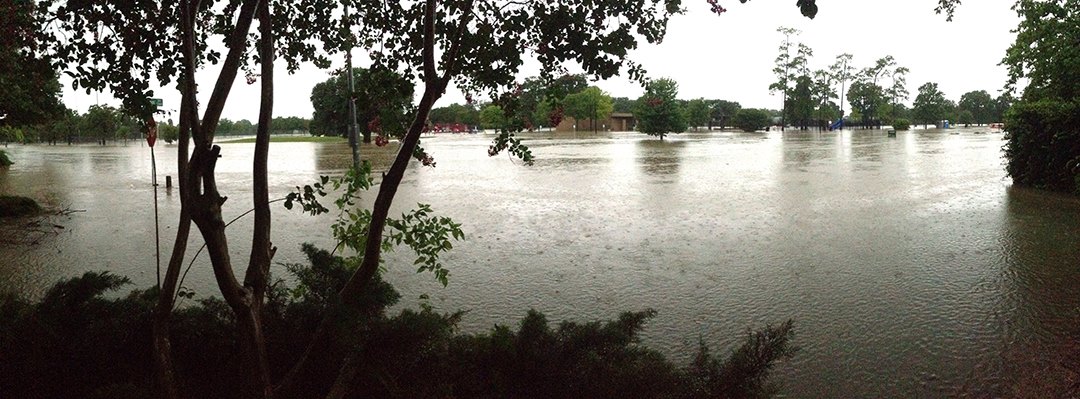


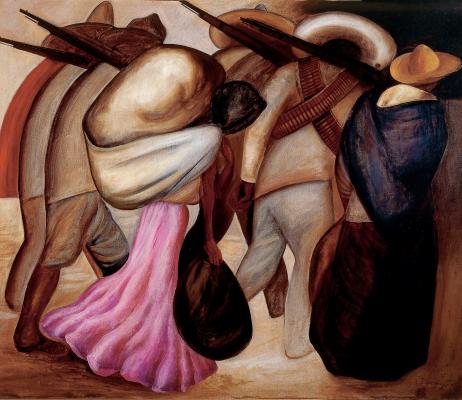
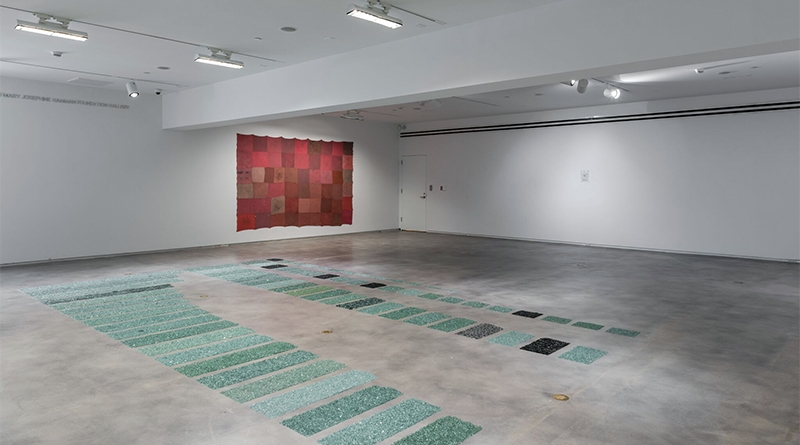

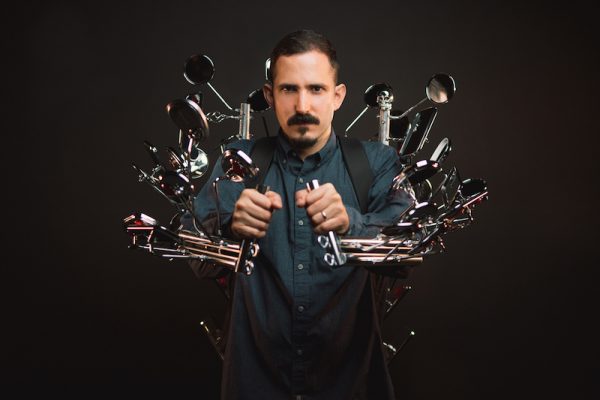
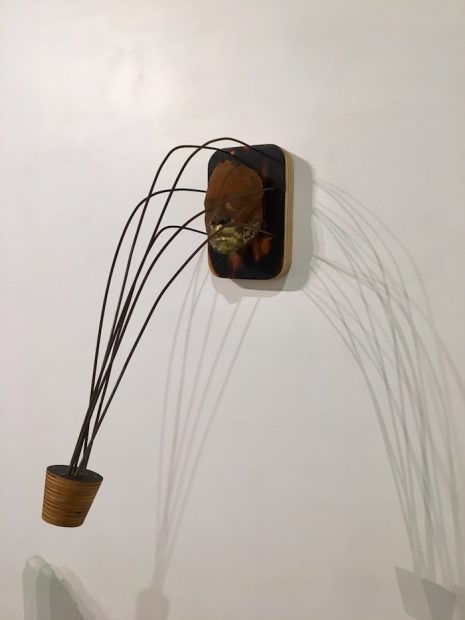
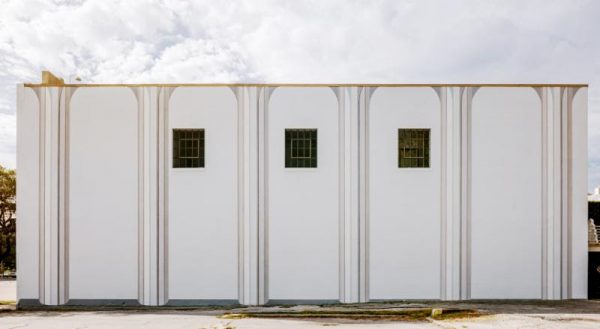
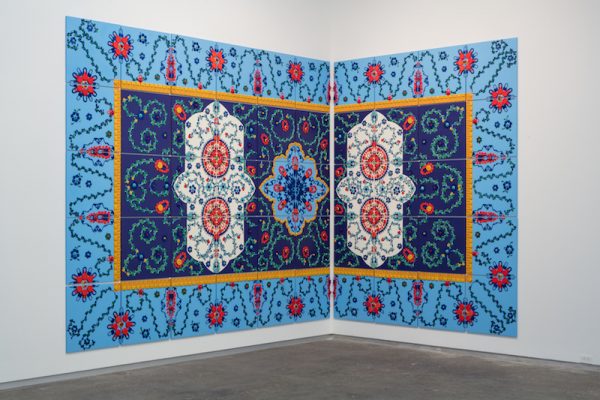
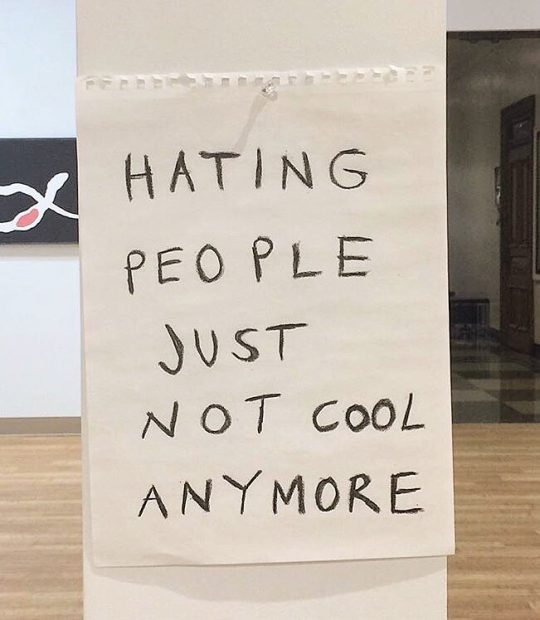

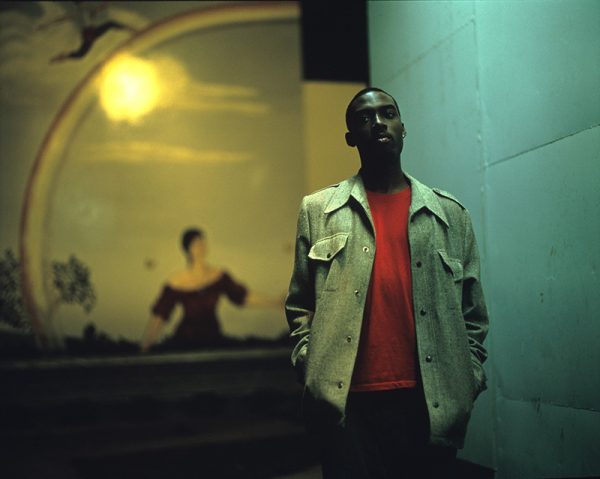
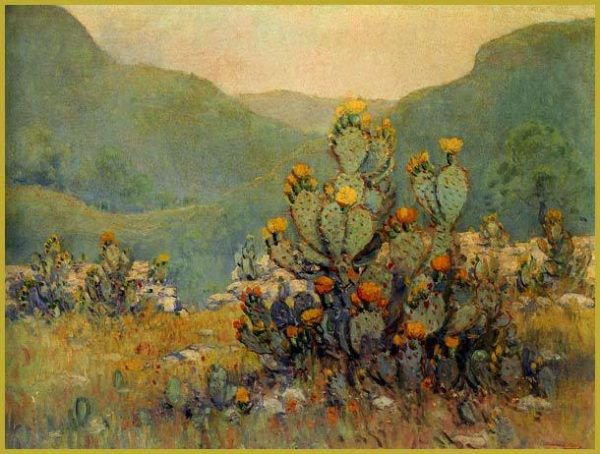
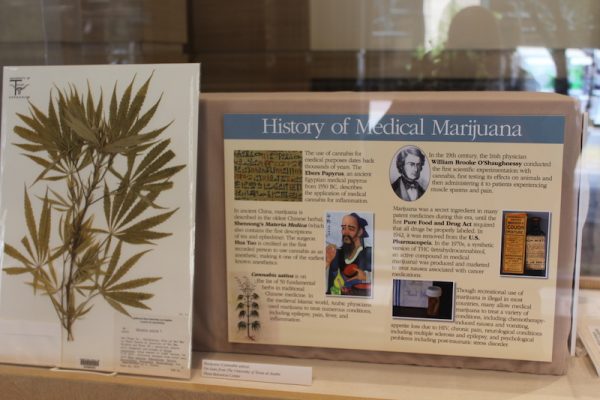
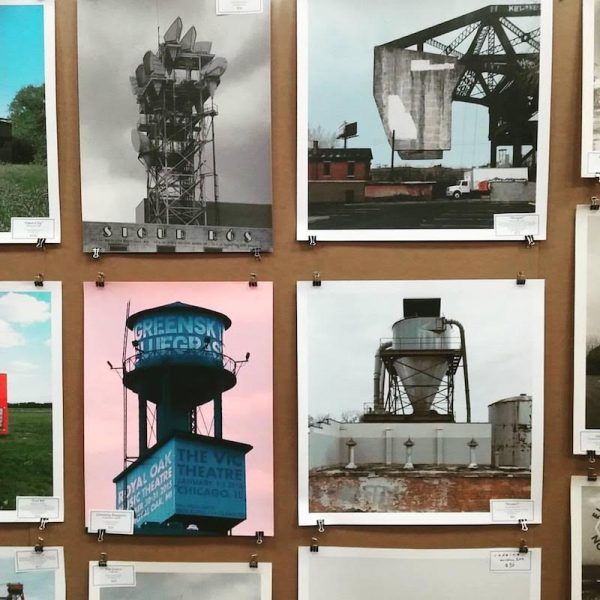
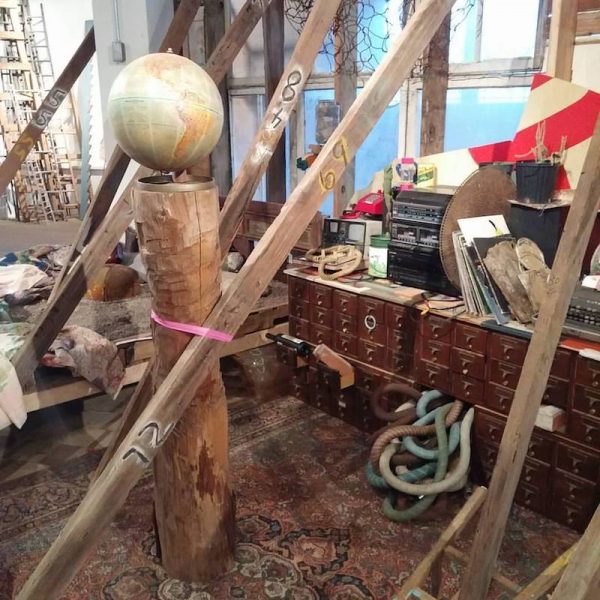

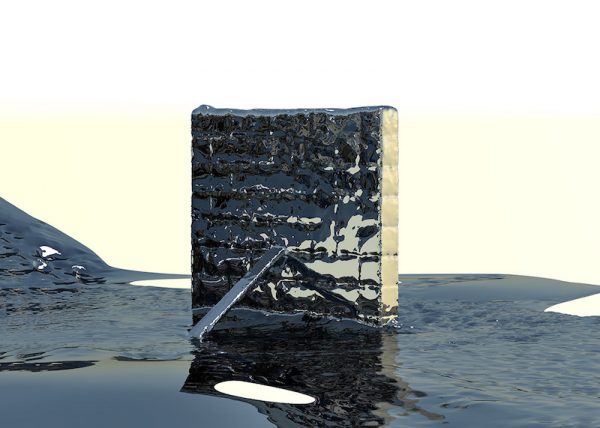
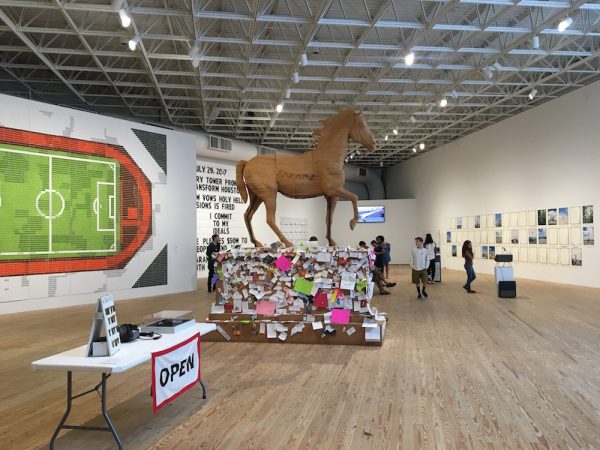
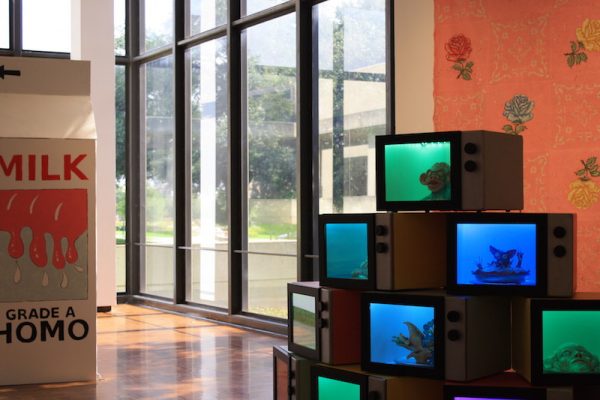
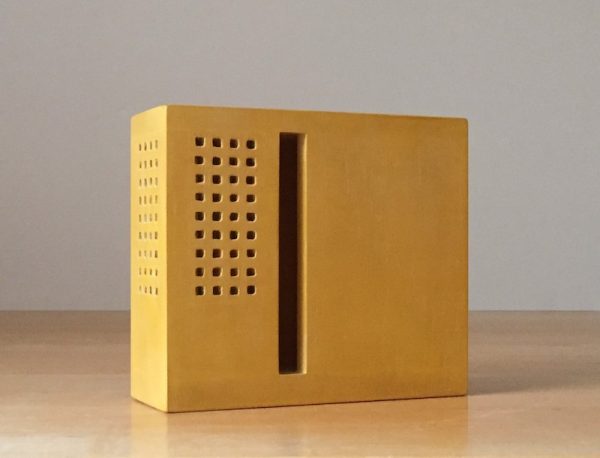
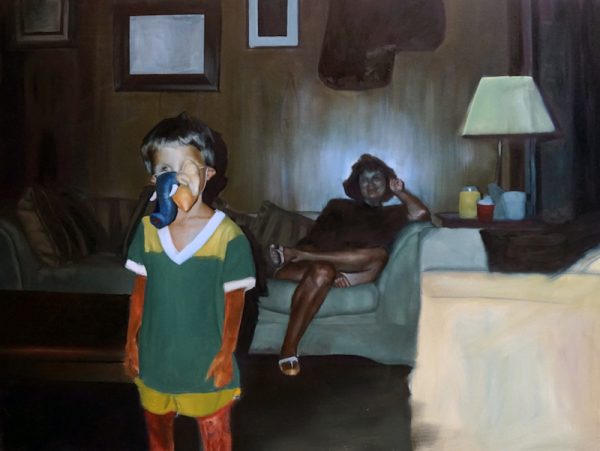
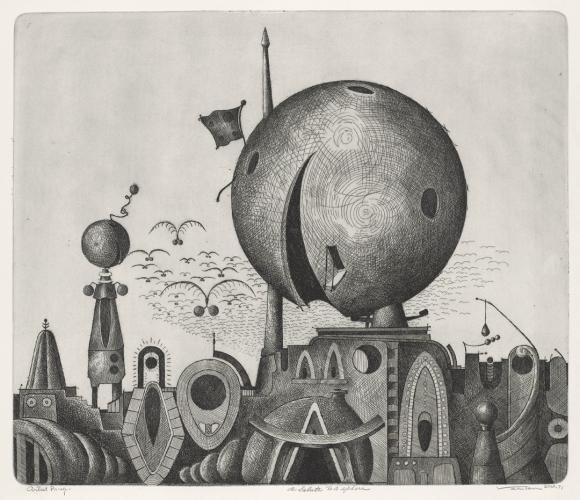

3 comments
Obviously the NY critics of Dawson Dawson Wastons creations were far more savvy than the gang from Texas . Too bad .
So very very grateful to be included. It made us feel so very happy.
I want to first say that Neil Fauerso’s review of Street Sects accurately describes the intense energy and truly unique experience it is to see Street Sects. That said almost everything else about his write up is very hard to read. His ignorance about the “Some Warehouse” and the band Street Sects is hard to see in writing on a site I respect as much as Glasstire. I am a part of the artist collective that runs that “Some Warehouse”, and that “Some Warehouse” was actually the alternative arts space Civic TV Laboratories. I understand that Mr. Fauerso does not live in Houston, but as a journalist or critic it seems important to me to try to get all the facts, names, and research correct no matter where you are or where you are from. Mr. Fauerso did not take the time to research the band and the space he is writing about enough to understand that labeling the space “Some Warehouse” may sound a bit demeaning to the very hard working artists that put their heart and soul into running it. So what Mr. Fauerso left out about the space, and what he did not take the time to understand about Street Sects, I will do my best to fill in here. Civic TV Laboratories is a collectively run arts space that focus on creating dialogue between visual artists and experimental musicians and sound artists. Had Mr. Fauerso simply googled the location, or asked anyone at the show, he would have very quickly been led to our website which clearly states what we are and do as well as has having a quite organized and detailed list of every art show and nearly every musical performance we have hosted over the last 4 years (www.civictv.org), or to numerous articles in the Houston Press and Free Press about our space (including one in Houston Press last year that named Civic TV in the Top 5 Houston Venues). Civic TV is very active in putting on art exhibitions and music events (which I know for some is an immediate turn off. The stereotype being that if an art gallery hosts music too that neither the music or art must be any good, but that is of course a stereotype). Obviously the music Mr. Fauerso encountered was quite good, hence the best of 2017 list, and I truly to believe that if one is to research our past art exhibits on our website, or make a practice of visiting our bi-monthly art openings, that they will see that Civic TV has been a very important exhibition space for local artists that allows them total freedom outside the confines that can come from more commercial oriented galleries. We feel that alternative art spaces like Civic TV, and there are many others in Houston, do the important work that really forms the backbone of a great art community. There will always be the commercial galleries and museums as long as there is money, and there’s absolutely nothing wrong with that, they are important and good, but it is the alternative spaces that allow for art, and in our case music too, to be seen outside of the control of capital. Anyone who has ever run “Some Warehouse” arts space knows just how difficult sustaining one can be. Every artists and musician that helps run Civic TV are themselves artists, who also have day jobs, and who also work their asses off to provide a space for the community to gather and see things they may not else wise get to see. We love what we do at Civic TV, and over the years we have found a way to make it sustainable (keeping an alternative space going for nearly four years now is no small feat), but it is so super discouraging to feel like a local arts organization like Glasstire, who we all deeply respect, would not take the time to insure that at the very least our name was mentioned. That Street Sects show was paid for out of our pockets, the door went entirely to the bands, and we do not sell alcohol. Sometimes we get just enough donations to cover our expenses, but not always. Again we love what we do, we love that a group of artists can get together their meager means and make an impact on the city they love (in the Houston Press’s Top Five Houston Venues article previously mentioned, the other 4 venues listed were all heavily funded commercial venues and bars. Simply put we do a lot with very very little, and have done so for nearly 4 years now). I encourage you Mr. Fauerso to spend some time on our website looking at the extensive list of art exhibitions and music shows we’ve done for a next-to-nothing budget over the last 4 years, for and by our city’s beautiful community. I think then you will see why being labeled as “Some Warehouse” would strike in us a deep feeling of disrespect. Glasstire, please support the local alternative spaces that are the grassroots of Texas’s art communities by at least making sure your writers check their facts.
Lastly, Street Sects is not some Texas DIY band, in the genre of music they play they are internationally lauded as one of Texas’s great musical exports. They tour nationally and internationally quite regularly, and are an extremely hard working band with members now in their middle ages who have found a way to make a living as working musicians. A quick look over their history, again a simple Google search, would have illuminated this quite clearly.
I understand that you, Mr. Fauerso, really enjoyed the show, hence it’s listing, and we are so happy that you visited our space and had a nice time. I know that our warehouse space wasn’t much, but minus Street Sects signature dense fog, I think you would have seen a humble arts space quite detailed and cared for. The space you visited was our second location, a temporary location, as that the first warehouse space we operated out of was sold out from under us (a rather common experience around here). Since you visited we moved into our first permanent location, a small bungalow house in Houston’s Near North neighborhood right outside of downtown. We still have an experimental music program at Civic TV, though it is smaller and quieter, allowing us to focus on new projects such as; publishing artist books for the artists we exhibit (we are working on our third), an art educational zine project that is being used in a few local high schools, and of course even greater focus and attention to the visual artists we exhibit. You can learn about all of these projects, and again about our past exhibits and music events, at http://www.civictv.org
Thank you for your time.